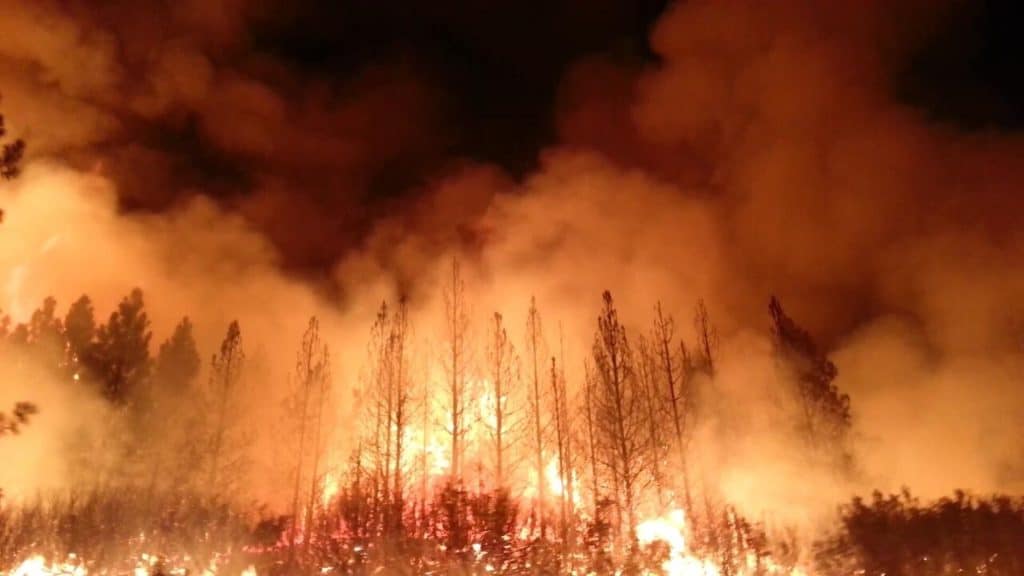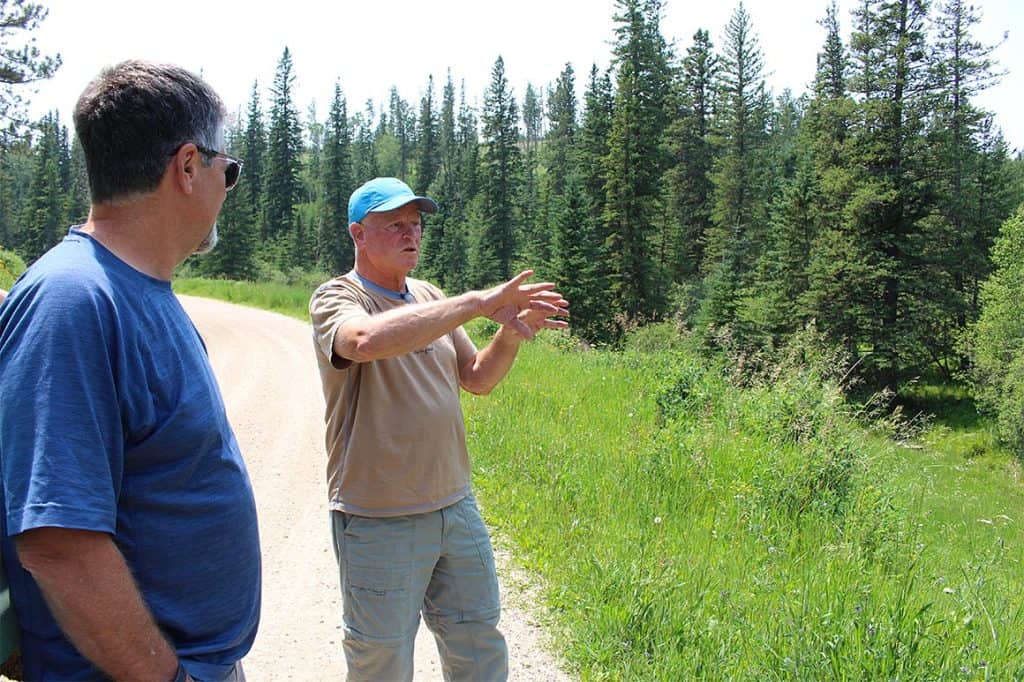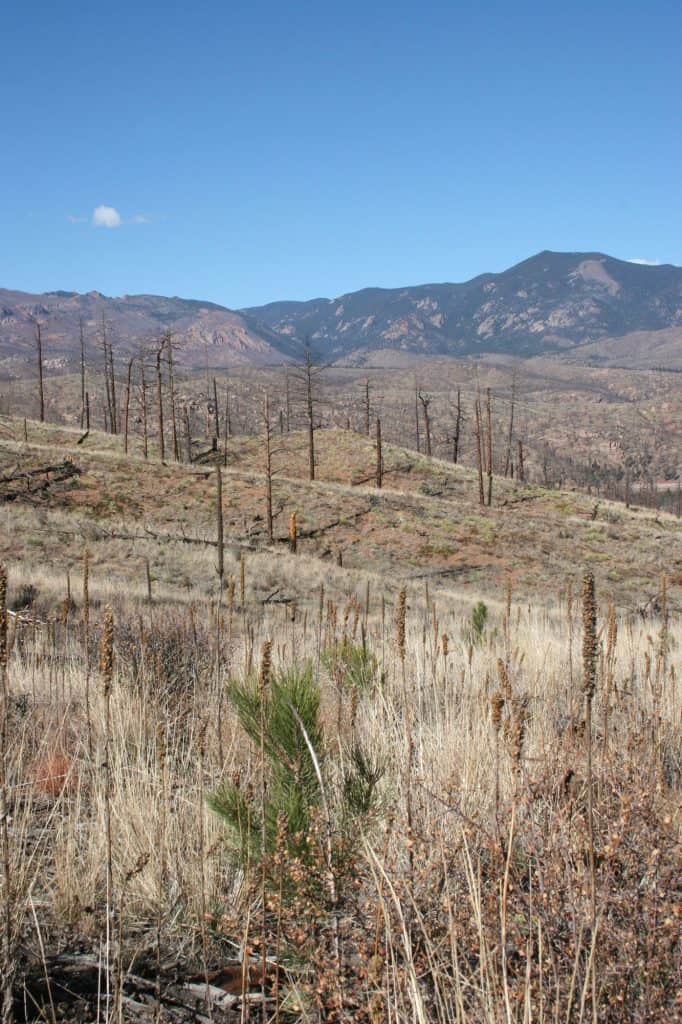These are all of interest. Please take a look and let us know what you think! Here’s the press release. My first few thoughts are in italics.
“WASHINGTON, April 20, 2023 – Today, in anticipation of the upcoming Earth Day celebrations, the U.S. Department of Agriculture (USDA) and the Department of the Interior (DOI) announced actions to foster forest conservation, enhance forest resilience to climate change, and inform policymaking on ensuring healthy forests on federally managed lands administered by the USDA Forest Service and the Bureau of Land Management (BLM).
To support these actions, USDA and DOI worked together to develop several reports, as directed by President Biden’s Executive Order on Strengthening the Nation’s Forests, Communities, and Local Economies (E.O. 14072), which he signed on Earth Day 2022. The Executive Order calls for inventorying mature and old-growth forests, setting reforestation targets on federally managed lands, and analyzing reforestation opportunities on state, Tribal and private lands. In addition, the Forest Service is releasing a new tool that illustrates the risks and vulnerabilities of climate change across the landscape along with a call for public input on how national forests and grasslands should be managed for climate resilience.
These actions represent concrete progress on the goals and priorities outlined one year ago in President Biden’s Executive Order, Secretary Vilsack’s Memorandum on Climate Resilience and Carbon Stewardship, as well as in the USDA Forest Service’s Wildfire Crisis Strategy, Climate Adaptation Plan (PDF, 26.1 MB), and Reforestation Strategy (PDF, 7 MB).
“Our forest ecosystems and communities are struggling to keep up with the stresses of climate change, whether it’s fire, drought, or insect infestations, it is clear that we must adapt quickly,” said USDA Under Secretary for Natural Resources and the Environment Homer Wilkes. “The USDA and our federal, tribal, state, local and community partners are working together to meet these challenges, pooling knowledge, sharing resources and discovering new ways to conserve resources, protect communities and ensure future generations can enjoy the countless benefits our forests provide.”
“Healthy, resilient forests are critical to helping us respond to the climate impacts being felt by communities across the country, because they store carbon, provide clean air and water, and sustain biodiversity,” said BLM Director Tracy Stone-Manning. “The reports released today will help enhance our work to protect and grow forests by creating a scientific framework for further study and public engagement for effective forest management and protection.”
Newly Released Joint Reports on Forest Conservation
The Mature and Old-Growth Forest report defines what mature and old growth forests are, establishes the first-ever initial inventory of those forests, and shows their distribution across lands managed by the USDA Forest Service and the Department of the Interior’s Bureau of Land Management. The initial inventory identified more than 32 million acres of old-growth and around 80 million acres of mature forest across 200 types of forests. The initial inventory found that old-growth forest represents 18% and mature forest another 45% of all forested land managed by the two agencies. Recognizing the many values of mature and old-growth forests, both agencies conducted significant outreach to gather public input from communities, tribes, scientists, and agency professionals in the report’s development.
Like all the nation’s forests, mature and old-growth forests are threatened by climate change and associated stressors. The initial inventory and definitions for mature and old-growth forests are part of an overarching climate-informed strategy to help retain carbon, reduce wildfire risk, and address climate-related impacts, including increased insects and disease.
As directed in President Biden’s Executive Order and laid out in the report, the USDA Forest Service and the Interior Department’s Bureau of Land Management will use these definitions and initial inventory to continue to refine results, assess threats to old growth and mature forest stands, and conduct public engagement. In the near future, the USDA and BLM also plan to incorporate information gathered from the National Aeronautics and Space Administration’s (NASA) Global Ecosystem Dynamics Investigation mission, which will provide forest inventory and analysis plots using space-based laser measurements. These efforts will help the agencies meet the science-based approach required in the executive order as well as develop management policy and strategies to recruit, sustain, and restore mature and old-growth forests.
Pinyon and juniper woodlands are the most abundant forest type in the federally managed inventory of mature and old-growth forests, with nine million acres of old-growth pinyon-juniper across BLM and Forest Service lands and an additional 14 million acres of mature pinyon-juniper. This summer, the Forest Service and the BLM will be co-hosting public workshops focused on sustaining resilient pinyon-juniper ecosystems. The workshops are intended to ensure robust public engagement and scientific expertise and knowledge are underpinning the approaches taken to fulfill the Executive Order and other management strategies for ensuring healthy, resilient pinyon and juniper woodlands.
Interesting because as I’ve pointed out, previous forest policy issues and debates have always had a mesic/timber framing. “Robust public engagement” might mean with those inhabiting those ecoystems- perhaps a different set of folks than the usual suspects.
USDA and DOI are also releasing a joint reforestation report (PDF, 471 KB) which includes reforestation targets, assessments and recommendations for increased capacity for seeds and nurseries.
In response to feedback from stakeholder engagement, the report offers recommendations to conduct seed and nursery operations, improve coordination with non-federal partners, leverage opportunities for innovation with the private sector, and build a reforestation workforce with partners like the Conservation Corps.
To develop targets for reforestation on public lands by 2030, USDA and DOI evaluated recent peer-reviewed assessments and datasets conducted on public lands and identified more than 2.3 million acres in need of reforestation. This report also includes an assessment of more than 70 million acres of possible reforestation opportunities with state, tribal and private landowners, providing valuable insight on how existing partnerships and programs could be focused where they are needed most.
Advanced Notice of Public Rulemaking to Build Climate Resilience
With climate change and related stressors causing rapid, variable change on national forests and grasslands, the Forest Service is asking for public input on how the agency should adapt current policies to protect, conserve, and manage national forests and grasslands for climate resilience. This Advanced Notice of Proposed Rulemaking for National Forest and Grassland Climate Resilience will be published in the Federal Register and publication will begin a 60-day public comment period. The Forest Service is also consulting with tribes and requesting feedback on current issues and considerations related to relying on the best available science including indigenous knowledge, as well as climate adaptation, mature and old-growth forests, and considerations for social and economic resilience.
I wonder why the BLM isn’t doing this also? They don’t need a comment period, as they already know how to build climate resilience? One could argue the FS also has a pretty good idea. So, what is this really about?
Climate Risk Viewer
As part of today’s announcement, the USDA Forest Service is sharing the beta version of a new tool to assess climate risks and vulnerabilities called the Forest Service Climate Risk Viewer. Developed with 28 high-quality datasets, it shows how resources overlap with climate exposure and vulnerability. This allows for more localized analysis of how climate adaptation can maintain, restore and expand forest ecosystems and watersheds. The viewer includes the new mature and old-growth forest inventory data for the Forest Service as well as datasets to identify gaps between current management and potential conservation and adaptation practices.
Bipartisan Infrastructure Law Field Guidance
In keeping with the spirit of President Biden’s Executive Order, earlier this week Forest Service Deputy Chief Chris French sent a letter to Forest Service Regional Foresters outlining leadership direction related to implementation of section 40803(g) of the Bipartisan Infrastructure Law regarding, which requires the consideration of how to manage for among other things, large trees and old growth stands in forest health projects.”
I’m not sure how this last one might fit with legislative intent, but if it’s not, I’m sure that Congressional folks will point it out.





